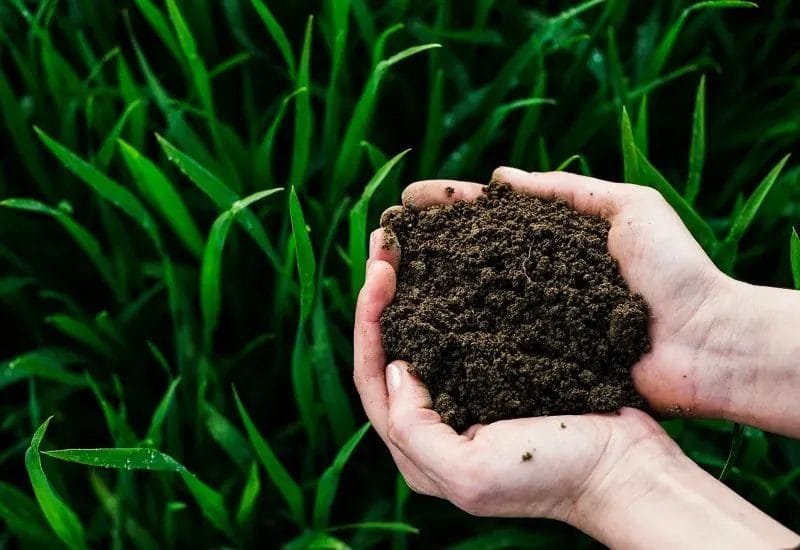Over time, you may have wondered how to improve your garden’s health effectively, and understanding the difference between compost and soil conditioner is key. Both play distinct roles in soil care and plant growth, and knowing when and how to use each can transform your landscape management. At Smith Brothers Services, including Smith Brothers Landscape and Smith Brothers Tree Services, we emphasize the importance of selecting the right soil amendment for your trees and plants. This guide will help you grasp these differences, empowering you to nurture your garden with confidence and expertise.
Defining the Foundations: Compost and Soil Conditioner
Understanding how compost and soil conditioners function lays the groundwork for optimizing your garden’s health. While both improve soil quality, they differ in composition, processing, and specific benefits. You’ll find compost teeming with decomposed organic matter full of nutrients, ideal for feeding plants directly. Soil conditioners focus more on adjusting physical properties of your soil, such as improving aeration or water retention. Each plays a unique role that Smith Brothers Services expertly harnesses in their tree services and landscaping projects to enhance plant vitality in distinct ways.
What is Compost?
Compost is the end product of decomposed organic materials like leaves, kitchen scraps, and grass clippings. This natural fertilizer is rich in crucial nutrients such as nitrogen, phosphorus, and potassium, which directly feed your plants. Over time, microorganisms break down these materials into dark, crumbly humus, boosting soil fertility and microbial life. Smith Brothers Landscape strategically incorporates compost into soil to provide not only nourishment but also to enhance soil structure and moisture retention, promoting robust tree growth and healthier gardens.
What is Soil Conditioner?
Soil conditioners are amendments designed primarily to improve the physical properties of your soil rather than add nutrients. Materials like peat moss, lime, gypsum, and certain organic matter loosen heavy clay soils, increase porosity, or adjust pH levels for better nutrient uptake. Unlike compost, which decomposes organic matter, soil conditioners are often used to stabilize and modify the texture and drainage of soil. This—Smith Brothers Tree Services applies skillfully—encourages root expansion and enhances aeration critical for tree health.
In practice, soil conditioners play a vital role in tailoring soil characteristics to the specific needs of your landscape’s vegetation. For example, sandy soils benefit from conditioners that improve moisture retention, whereas clay soils require amendments that enhance drainage and reduce compaction. By carefully selecting and applying these conditioners, Smith Brothers Services ensures your soil’s structure supports the long-term vitality of your trees and plants, resulting in sustainable growth and resilience.
Nutritional Value Compared: The Bioscience of Organic Matter
| Compost | Soil Conditioner |
|---|---|
| Rich in nitrogen, phosphorus, potassium, plus trace minerals Contains beneficial microbes aiding nutrient availability Produced through controlled decomposition of organic waste |
Primarily improves soil texture and moisture retention May include peat moss, gypsum, or synthetic components Focuses on altering physical rather than chemical soil traits |
Nutrients in Compost
Your compost delivers a balance of necessary nutrients—usually 1-2% nitrogen, 0.1-0.5% phosphorus, and 1-2% potassium—along with micronutrients like calcium and magnesium. The microbial activity in compost helps break down organic materials, releasing nutrients slowly to your plants. Smith Brothers Services recommends compost to enhance nutrient cycling, especially for your vegetable gardens or flower beds.
Ingredients of Soil Conditioners
Soil conditioners contain materials like peat moss, vermiculite, or gypsum, aiming to improve aeration, water retention, and soil structure without substantially adding nutrients. For instance, vermiculite aids moisture retention while gypsum can alleviate soil compaction and reduce sodium levels.
Such components help modify the physical environment of your soil, balancing clay-heavy or sandy textures. Smith Brothers Landscape advises using conditioners alongside fertilizers to optimize root development and support healthy trees and shrubs, a service also supported by Smith Brothers Tree Services expertise.
Functional Roles in Soil Health: The Benefits You Need to Know
Understanding how compost and soil conditioners interact with your garden’s soil lets you target specific soil health goals. Compost primarily fuels nutrient cycles and microbial diversity, while soil conditioners focus on physical soil improvements. Each plays a unique role in enhancing your soil’s productivity and resilience, directly impacting the success of your planting efforts with Smith Brothers Landscape and Smith Brothers Tree Services. Knowing these roles empowers you to select the right amendments that improve your soil’s health efficiently and sustainably.
Enhancing Soil Fertility with Compost
Compost significantly boosts soil fertility by enriching it with organic matter and vital nutrients like nitrogen, phosphorus, and potassium. This microbial-rich amendment supports nutrient cycling, making nutrients more accessible to plant roots. For example, Smith Brothers Services incorporates compost into lawn care to revitalize depleted soils, helping your trees and plants thrive by enriching your garden’s biological processes without relying heavily on synthetic fertilizers.
Improving Soil Structure with Soil Conditioners
Soil conditioners alter the soil’s physical properties, improving aeration, moisture retention, and drainage. Materials like peat moss or gypsum break up compacted clay or sandy soils, creating a looser structure that supports root growth. When Smith Brothers Landscape applies soil conditioners, they help prevent water runoff and erosion, promoting stronger root systems and healthier overall plant development.
Expanding on the benefits of soil conditioners, you’ll find that their ability to improve soil porosity directly influences water infiltration rates and oxygen availability. For instance, gypsum is highly effective in sodic clay soils by displacing sodium ions and promoting aggregate formation, which enhances soil crumb structure. This improved structure facilitates more efficient root penetration and nutrient uptake, reducing the need for frequent watering—a key consideration for maintaining healthy trees and landscapes with Smith Brothers Tree Services.
Application Techniques: How to Use Both Effectively
You can optimize your garden’s health by applying compost and soil conditioners at different stages and in distinct ways. Compost typically enhances nutrient content and soil microorganisms, making it ideal as a top dressing or mixed into the top 6-8 inches of soil before planting. Soil conditioners, on the other hand, improve soil texture and water retention, best applied deeper into the soil or around root zones, especially for trees and shrubs. Using both appropriately based on their functions maximizes benefits, whether you’re working with annual veggies or mature trees serviced by Smith Brothers Tree Services.
When and How to Apply Compost
You’ll want to spread compost in early spring or fall, mixing it into garden beds to replenish nutrients before planting. For established plants, apply a 1-2 inch layer around the base as mulch to nourish the soil gradually. Compost from Smith Brothers Landscape adds organic matter that encourages beneficial microbial activity, enhancing soil fertility. You can also top-dress lawns with compost to promote healthier grass growth. Avoid over-application to prevent nutrient imbalances and stick to recommended amounts suited for your crop or garden type.
Best Practices for Soil Conditioner Application
Apply soil conditioners like peat moss or gypsum ahead of planting to improve soil structure and water infiltration. Incorporate them into the root zone of trees serviced by Smith Brothers Tree Services to address compacted or clay soils. A general guideline is to use 2-3 inches worked into the top 12 inches of soil. For sandy soils, conditioners help retain moisture, while in clay soils, they increase aeration. Regular application every few years keeps your soil balanced, reducing erosion and supporting healthy root development.
Adding depth to application methods, soil conditioners require precise integration to prevent layering that can impede root growth. Mixing thoroughly with native soil encourages uniform texture and better water movement, which promotes robust roots and reduces stress on your plants. Adjust the amount based on soil tests and plant requirements, and consider consulting Smith Brothers Services for tailored recommendations that match your property’s unique soil conditions.
Environmental Impact: The Sustainability Perspective
Looking at how compost and soil conditioners affect the environment reveals notable differences. Compost naturally recycles organic waste, reducing landfill volumes and greenhouse gas emissions. Soil conditioners, on the other hand, often require industrial processing or synthetic inputs, which can increase their carbon footprint. Balancing your garden’s nutrient needs with environmental responsibility means understanding these impacts and choosing options that align with sustainability goals.
Compost’s Role in Reducing Waste
Compost transforms kitchen scraps, yard clippings, and other organic waste into nutrient-rich material that feeds your plants while diverting waste from landfills. By using compost, you participate in a circular system that decreases methane emissions from decomposing waste and cuts down on the need for chemical fertilizers, benefiting both your garden and the planet.
The Ecological Footprint of Soil Conditioners
Many soil conditioners involve energy-intensive manufacturing processes or incorporate synthetic elements that contribute to carbon emissions and resource depletion. Choosing conditioners with natural ingredients or those produced through sustainable practices helps minimize these environmental costs.
Specifically, soil conditioners that contain peat moss can have a significant ecological impact, as peat extraction disrupts delicate ecosystems and releases stored carbon. Alternatively, conditioners made from recycled organic materials or renewable resources can support soil health with a lower environmental footprint. When sourcing products from companies like Smith Brothers Services, inquire about their sustainability certifications and ingredient origins to make more eco-conscious decisions for your landscaping or tree services.
To wrap up
Summing up, understanding the difference between compost and soil conditioner helps you make informed decisions for your garden’s health. Compost, rich in organic matter, enhances soil fertility by providing nutrients, while soil conditioners primarily improve soil structure and aeration. By choosing the right product, you optimize your soil’s performance and support your plants’ growth. For expert advice, you can always rely on Smith Brothers Services, including Smith Brothers Landscape and Smith Brothers Tree Services, ensuring your outdoor spaces thrive with professional trees services tailored to your needs.

